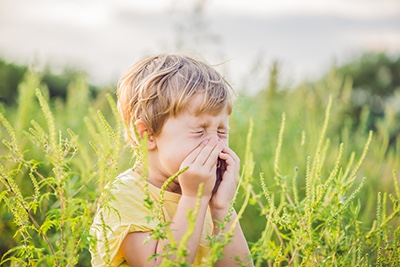
The most common fall allergens in North Texas are ragweed pollen, mold spores (especially from decaying leaves), dust mites, and pollen from certain grasses. These allergens can lead to symptoms like sneezing, congestion, itchy or watery eyes, coughing, and sometimes asthma flare-ups.
Ragweed is the top trigger of fall allergies in North Texas. In North Texas, the highest ragweed pollen counts occur from mid-August through early November, with a peak in September and October. Ragweed season varies slightly year-to-year depending on weather, but allergy sufferers can reliably expect intense symptoms in these core months.
A single plant can produce up to a billion pollen grains that travel for miles! To help limit exposure, keep windows closed to maintain indoor air quality.
Showering and changing clothes after spending a substantial amount of time outside can also really help. Checking local pollen forecasts is helpful to plan around high-risk days. Over-the-counter and prescription medications like antihistamines can assist with symptom relief. Your physician can create a plan to help you with allergy symptoms.